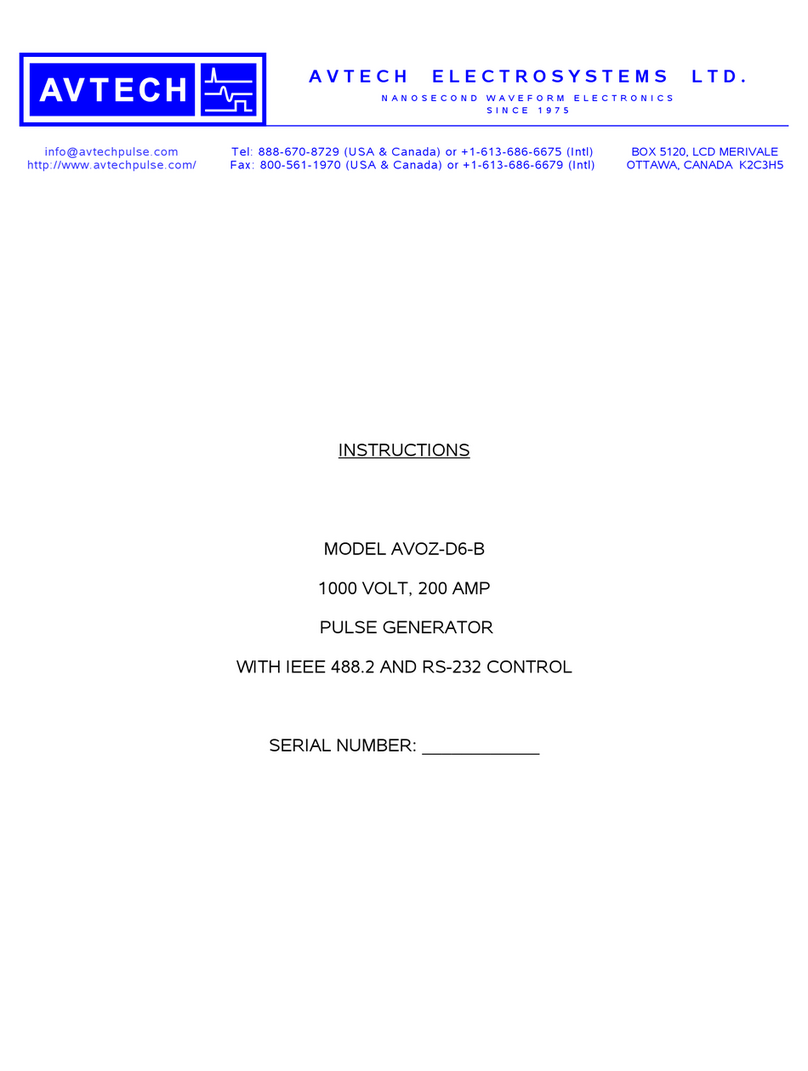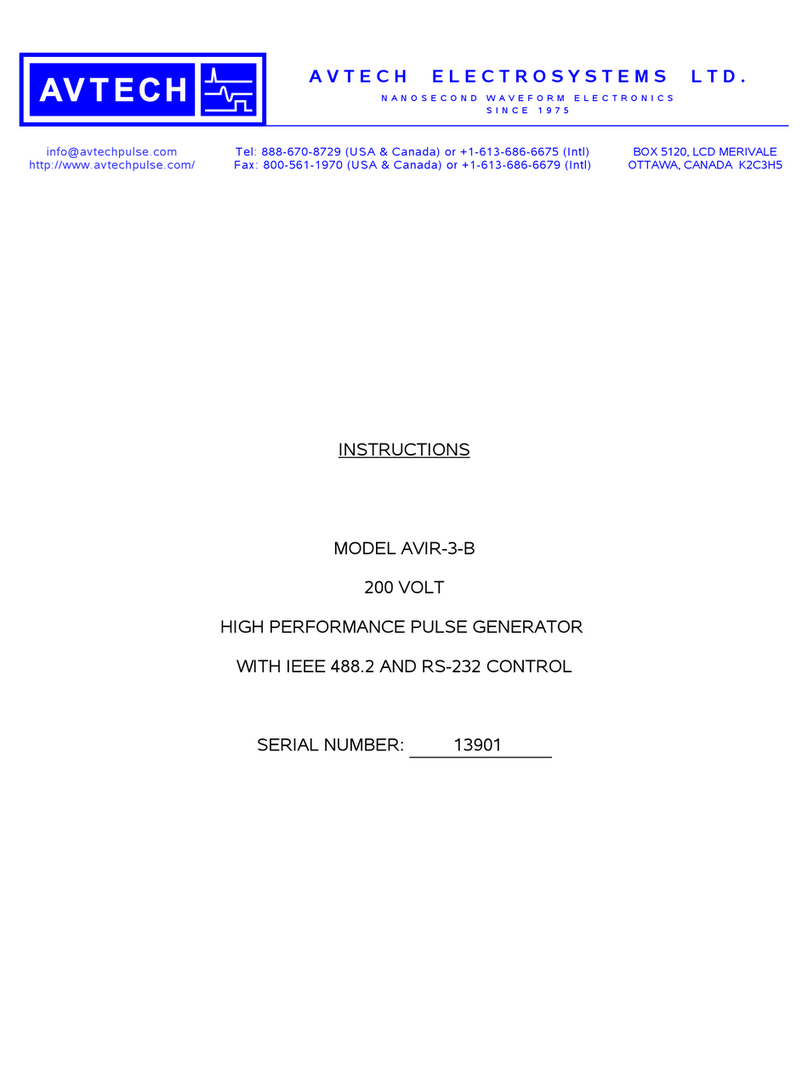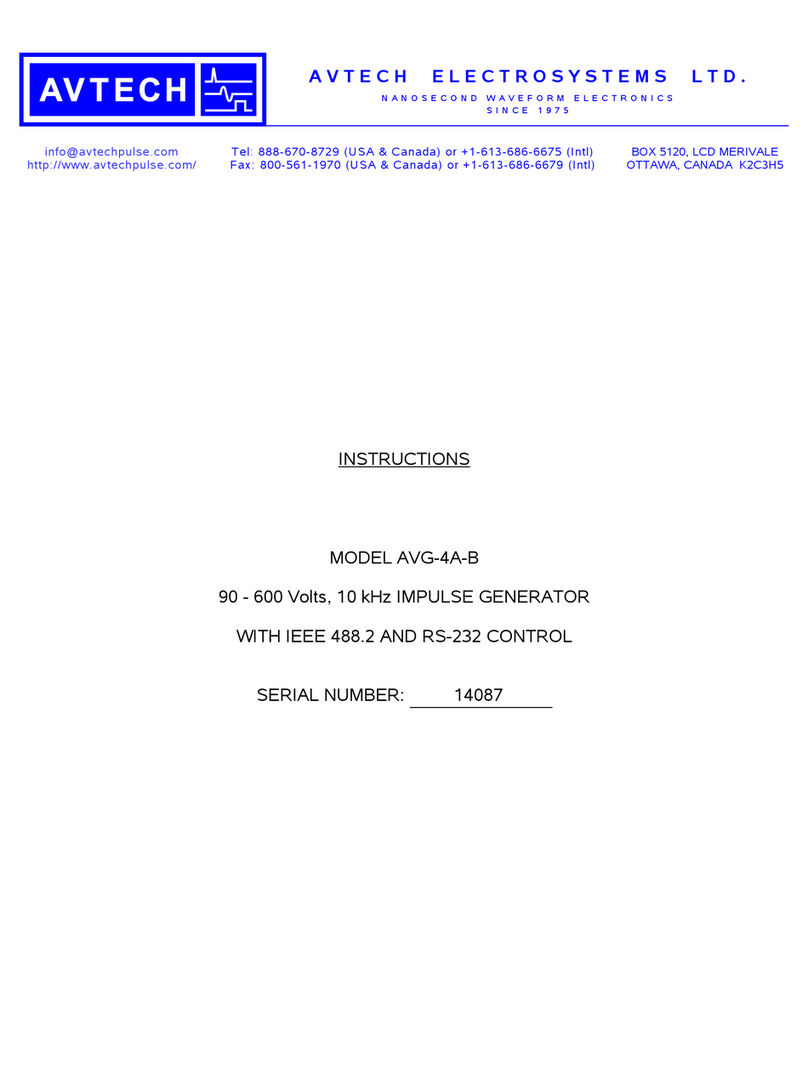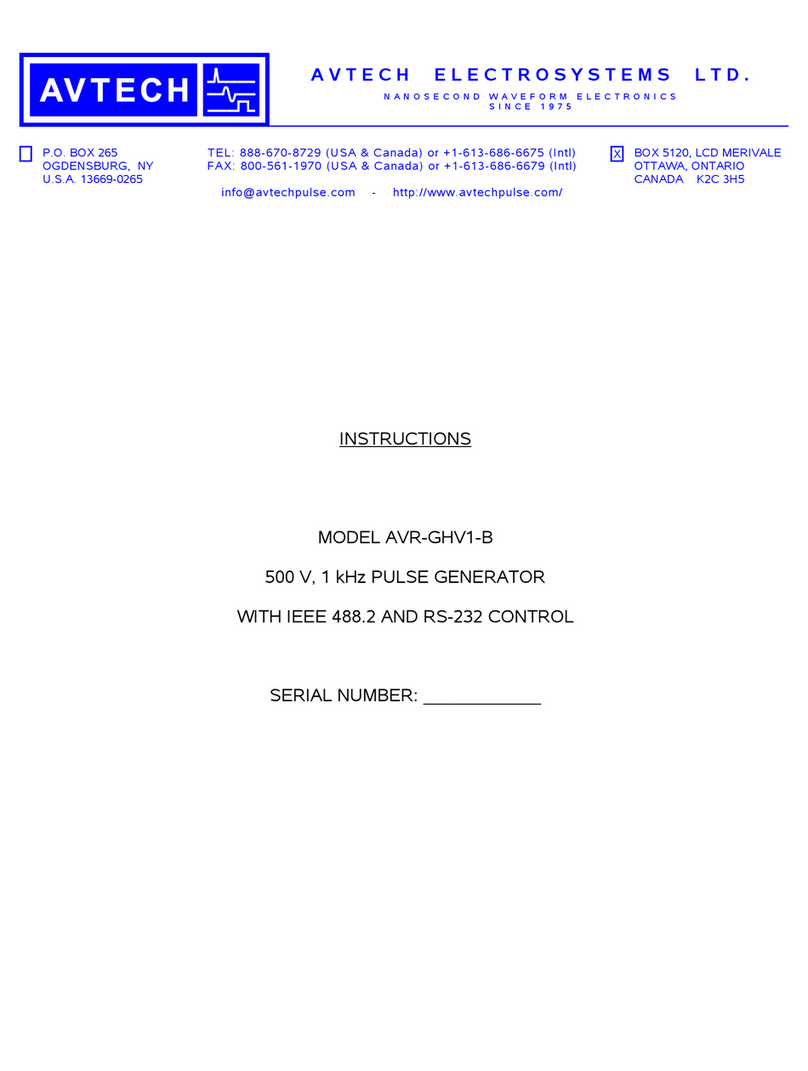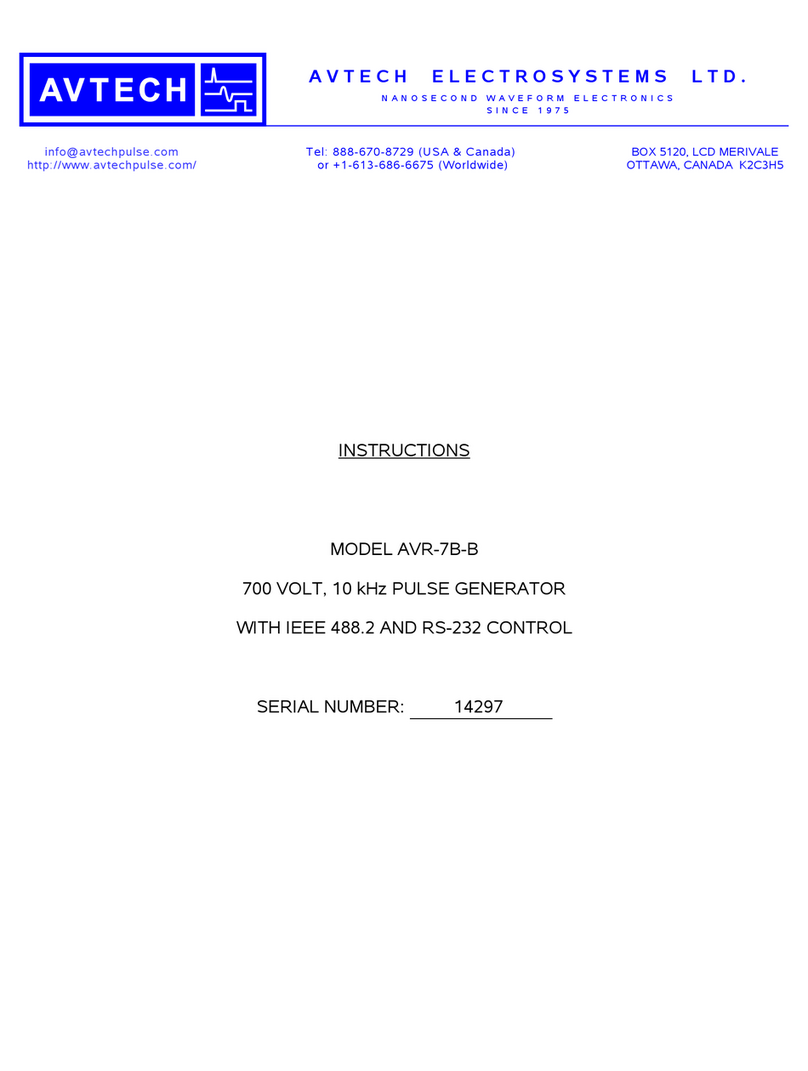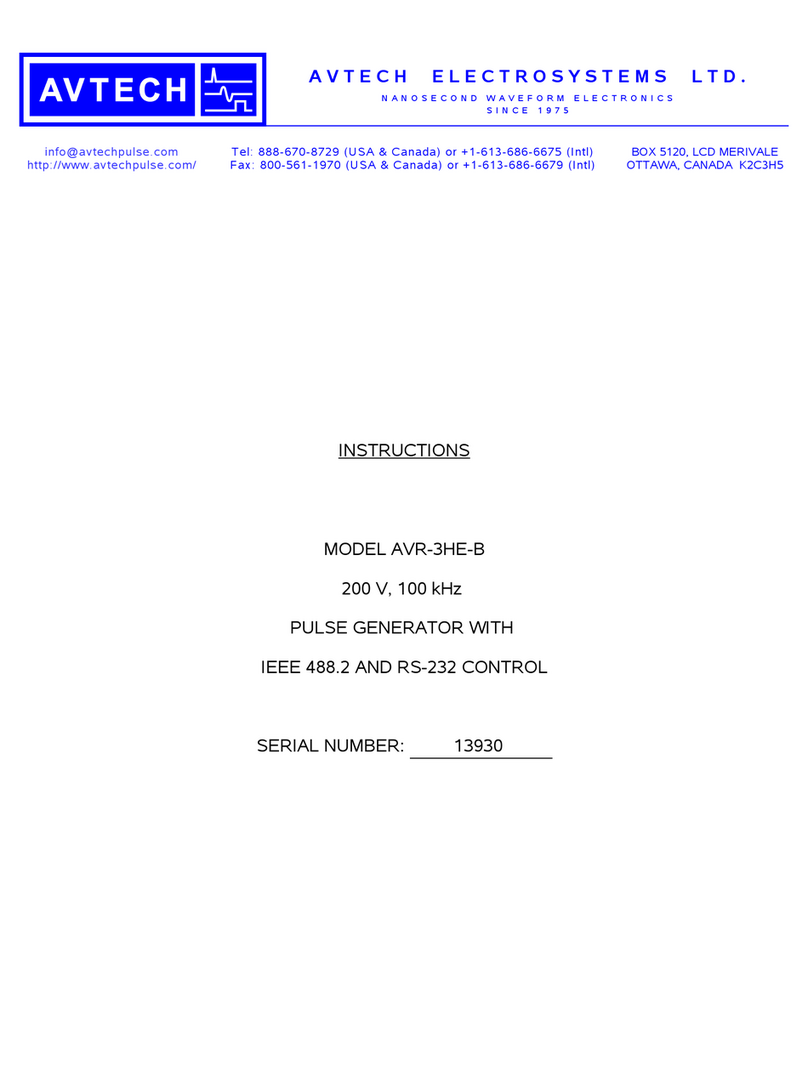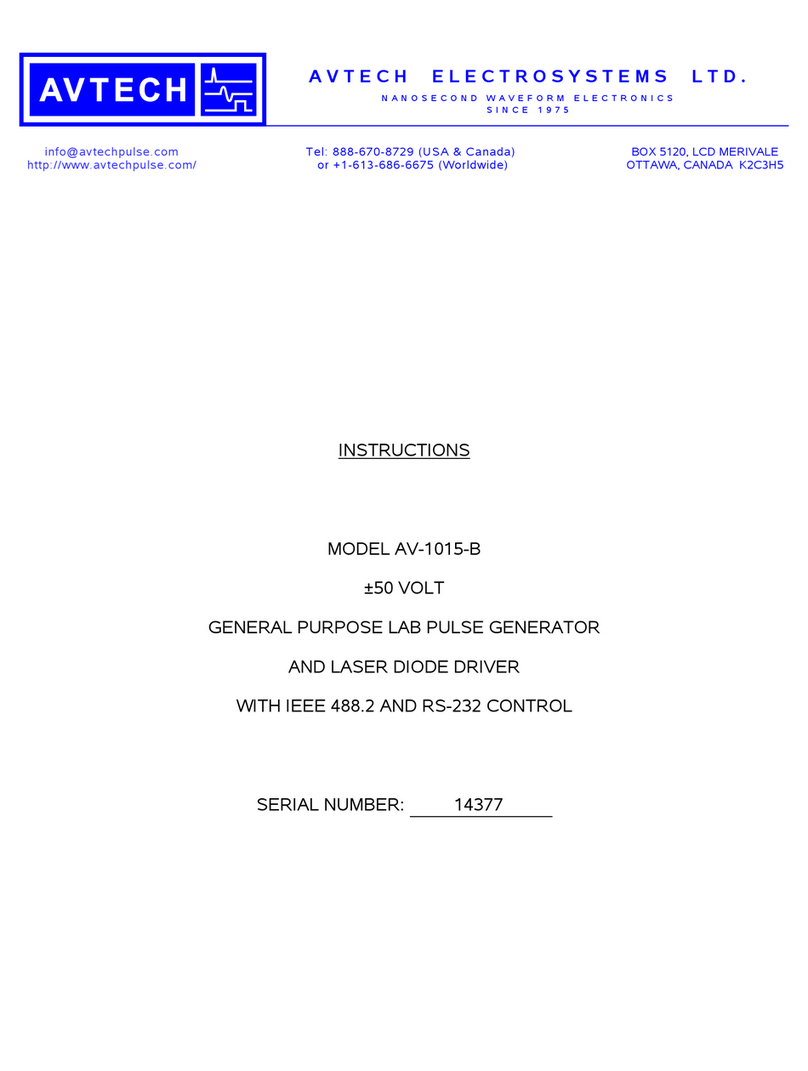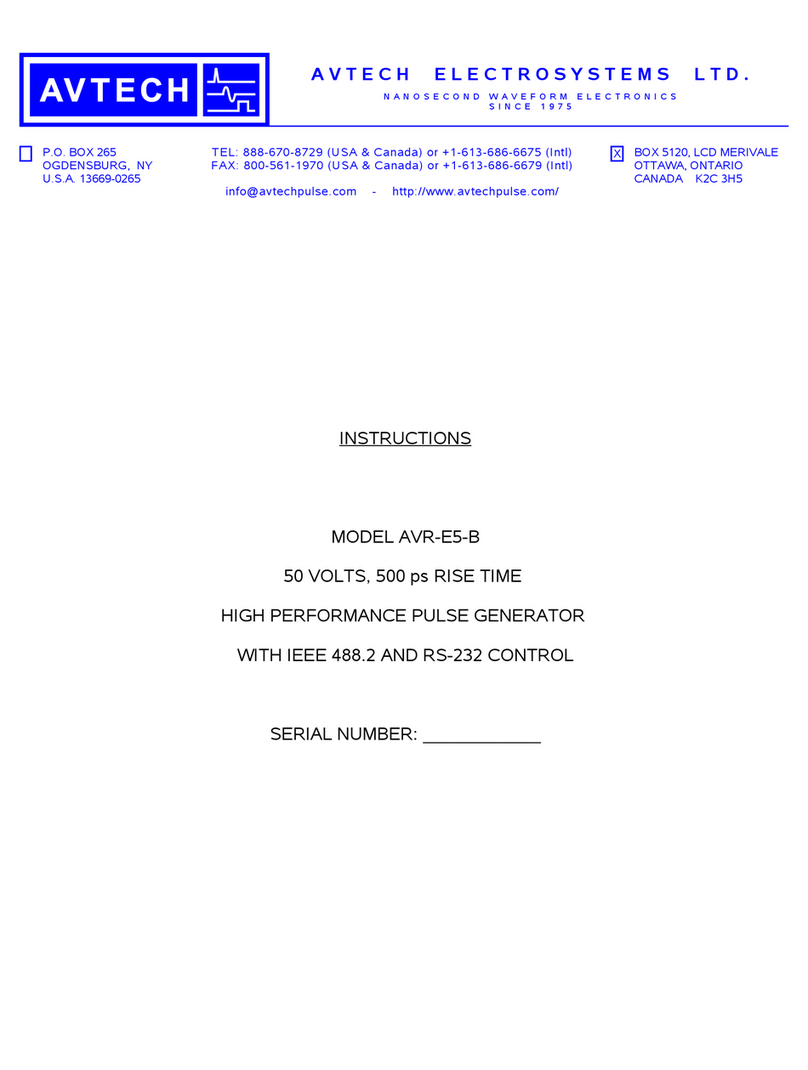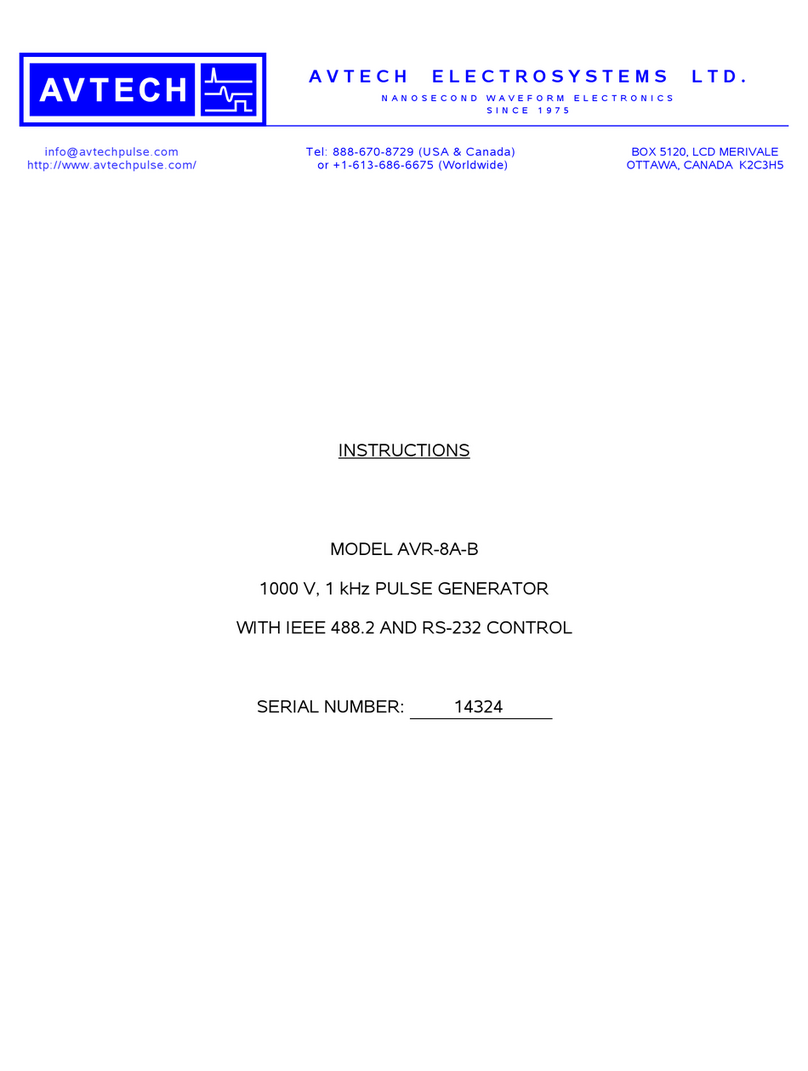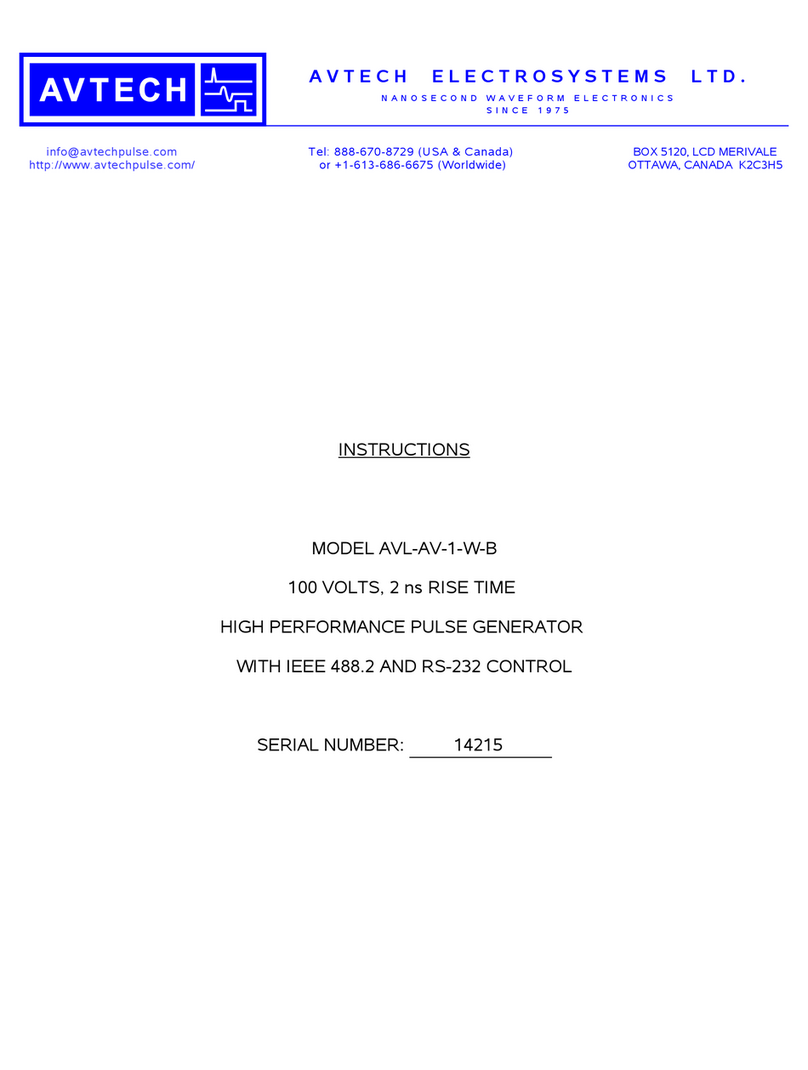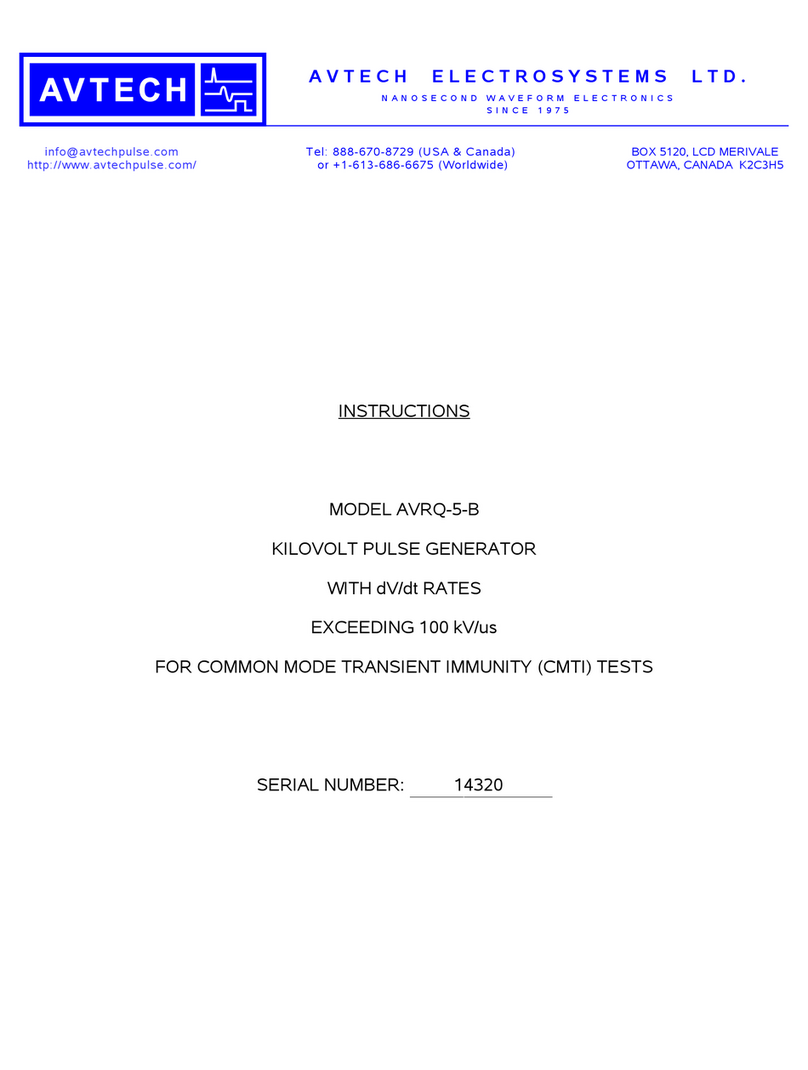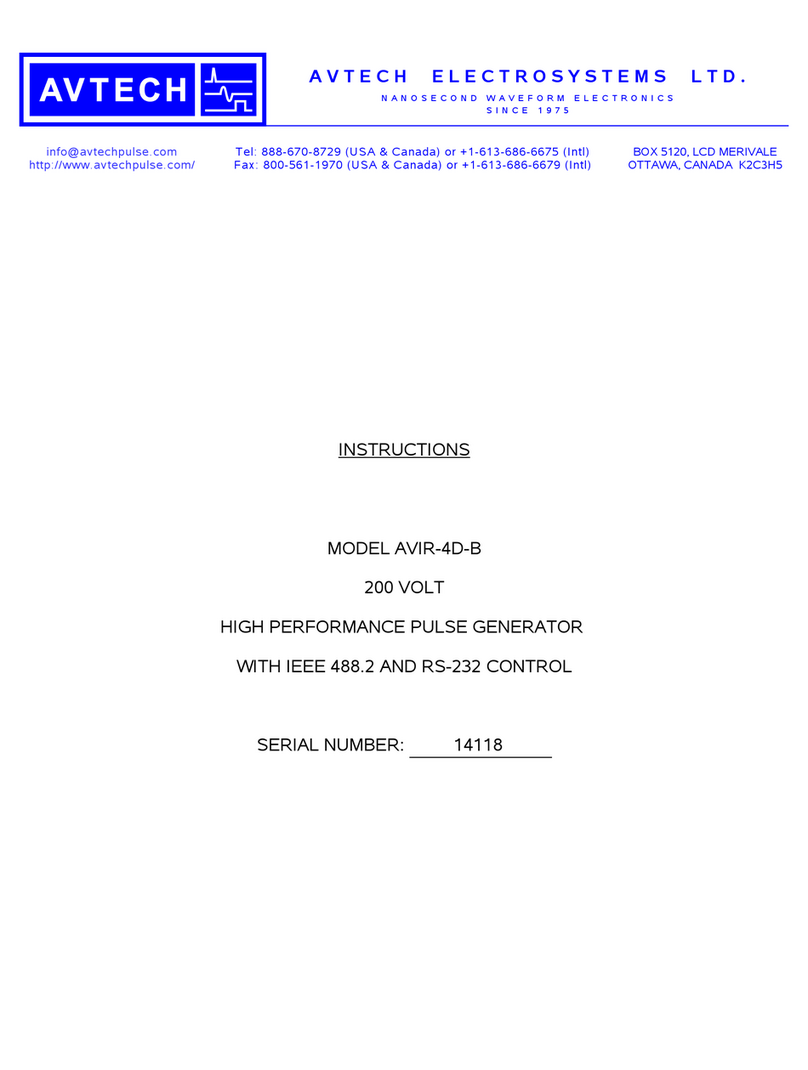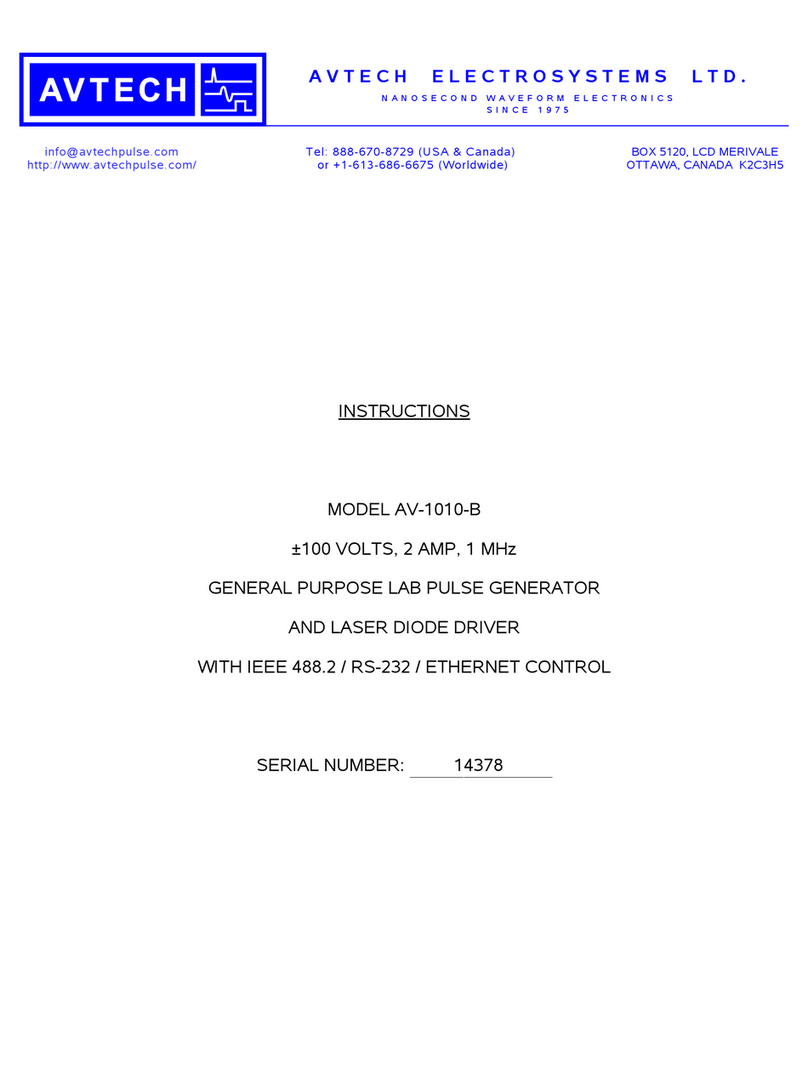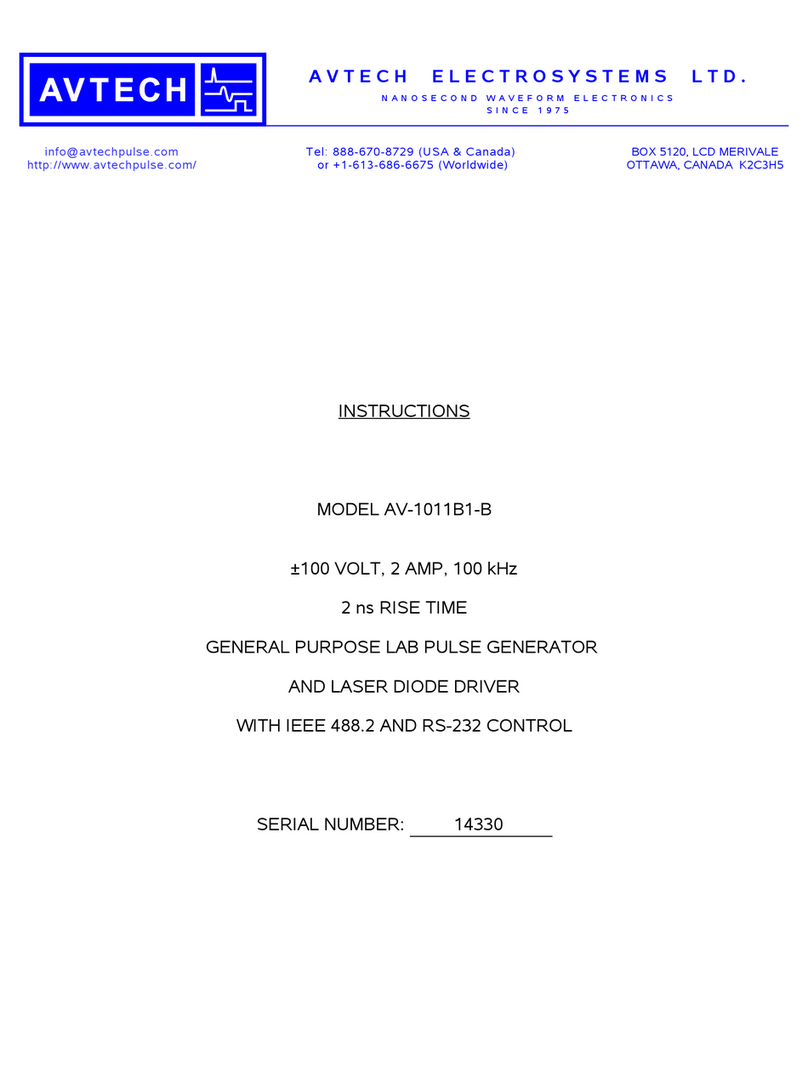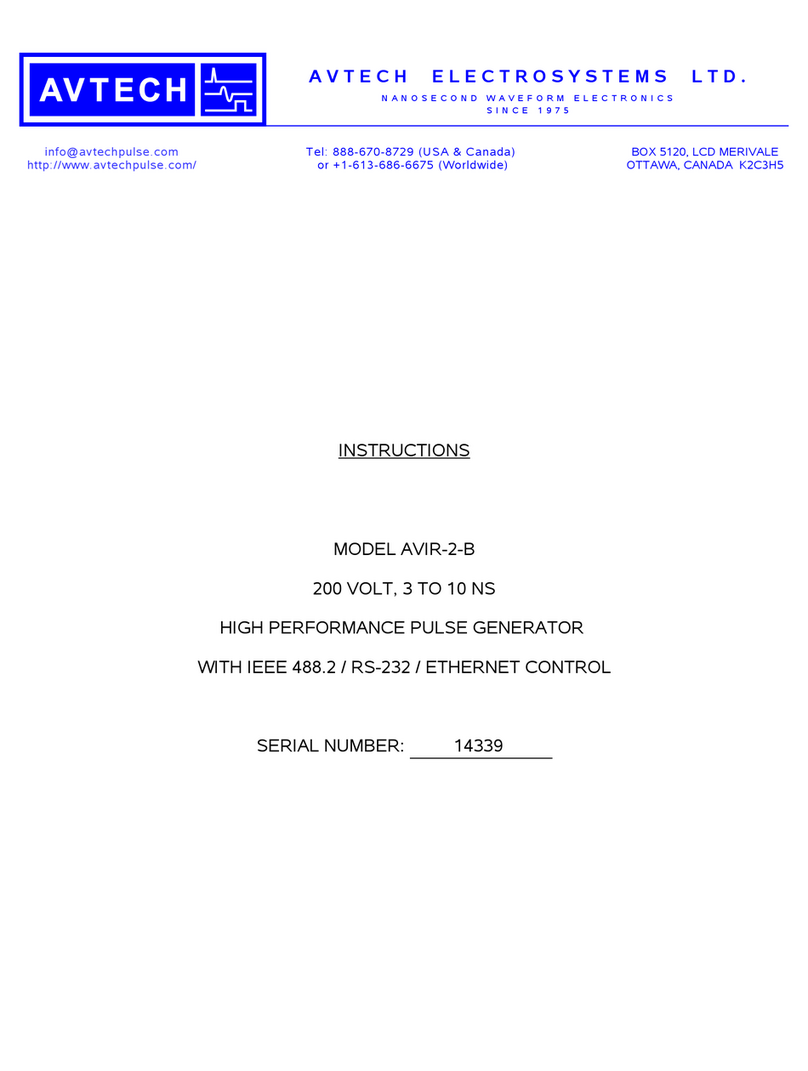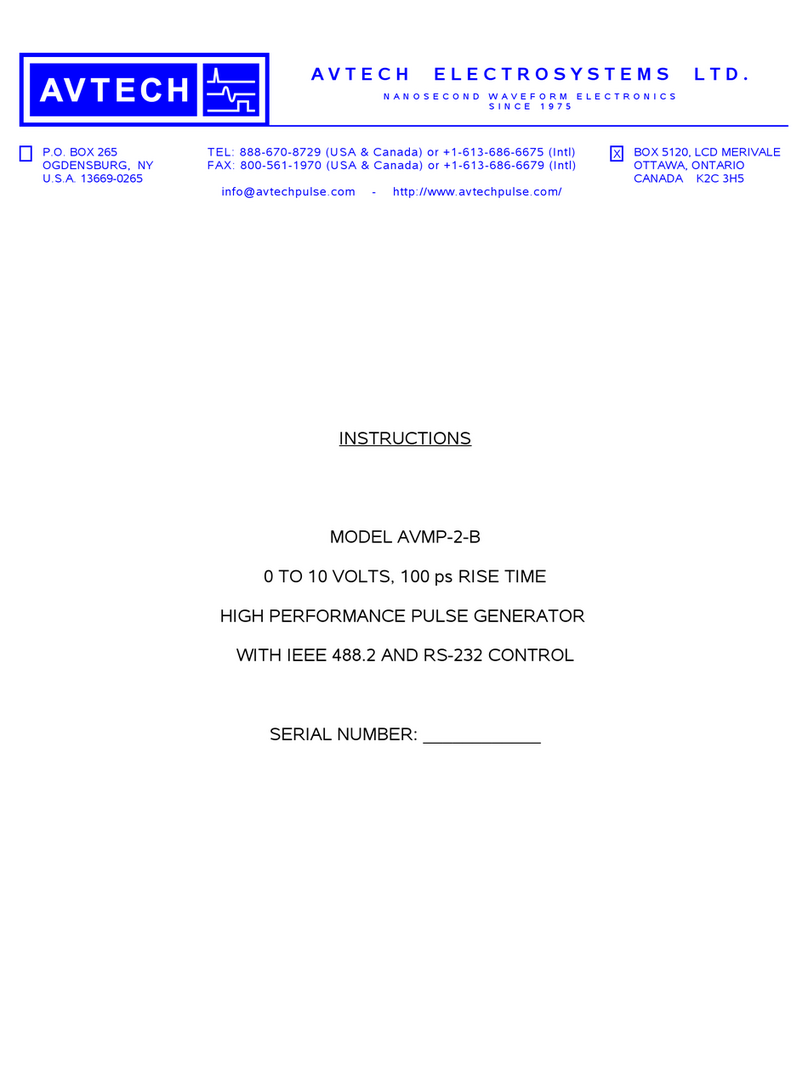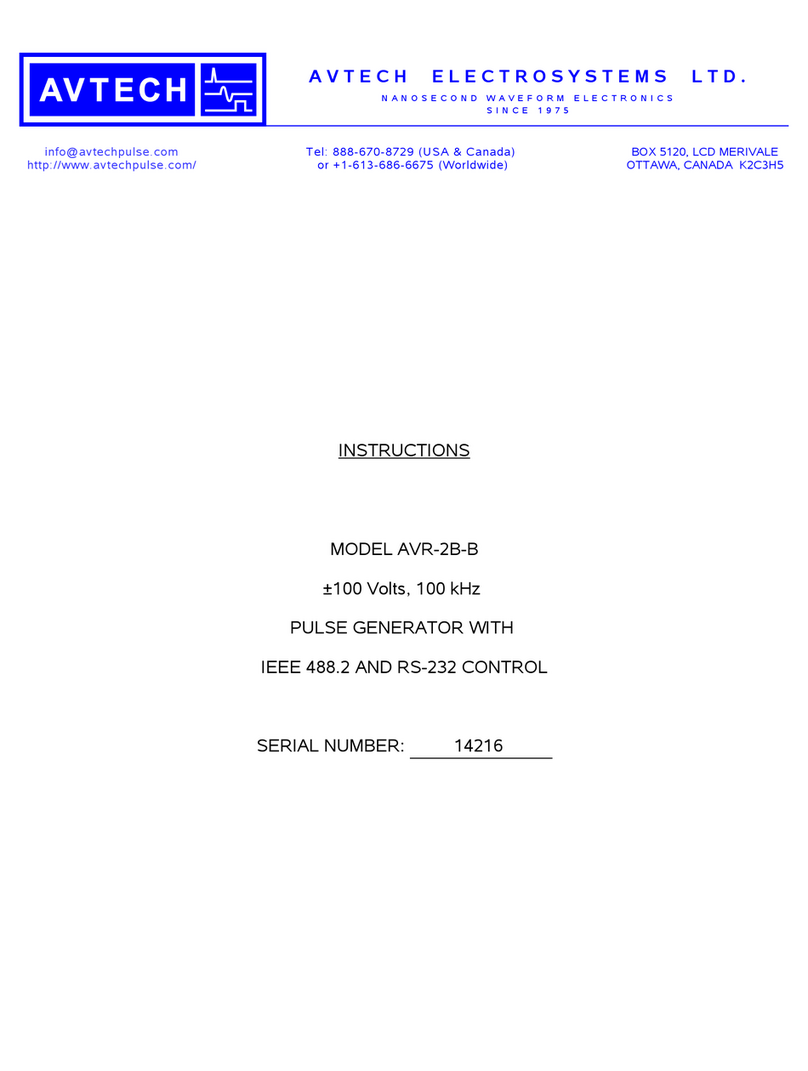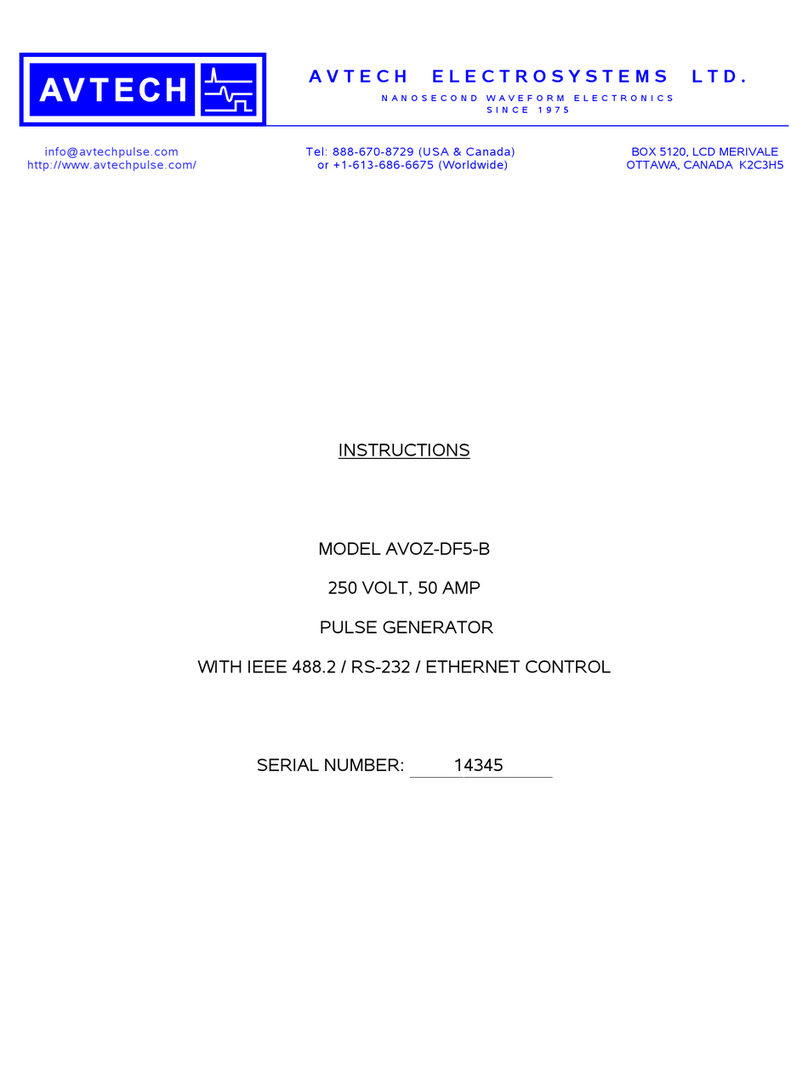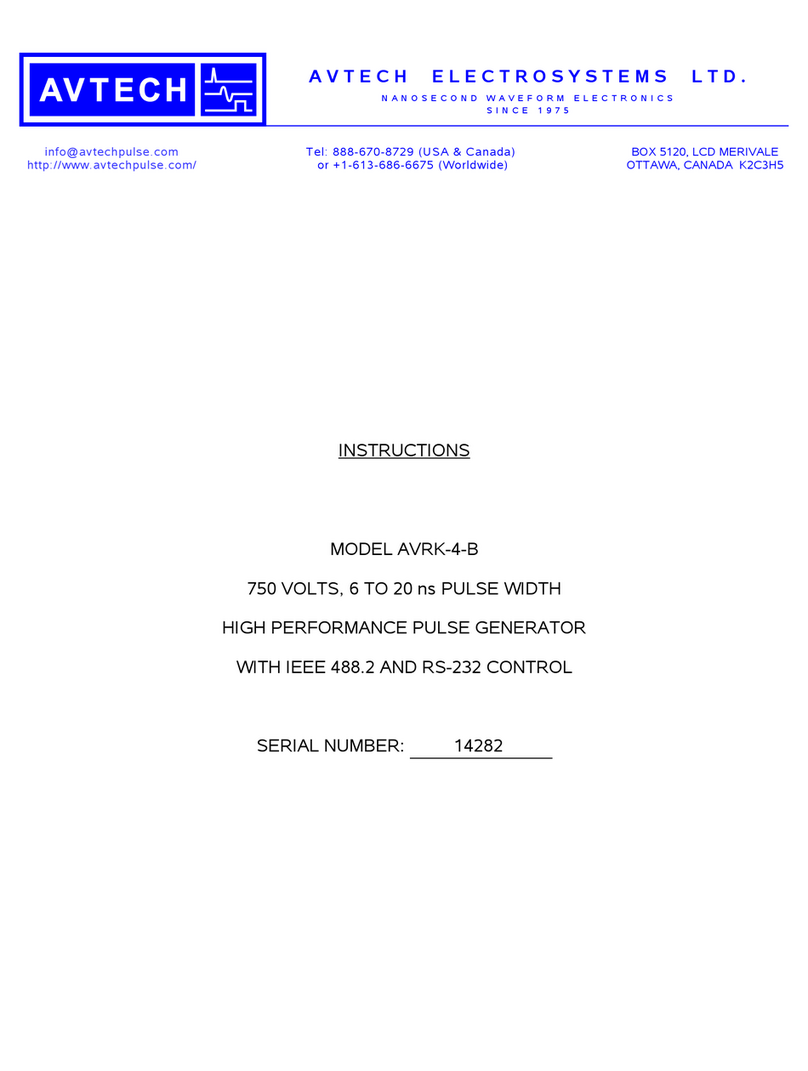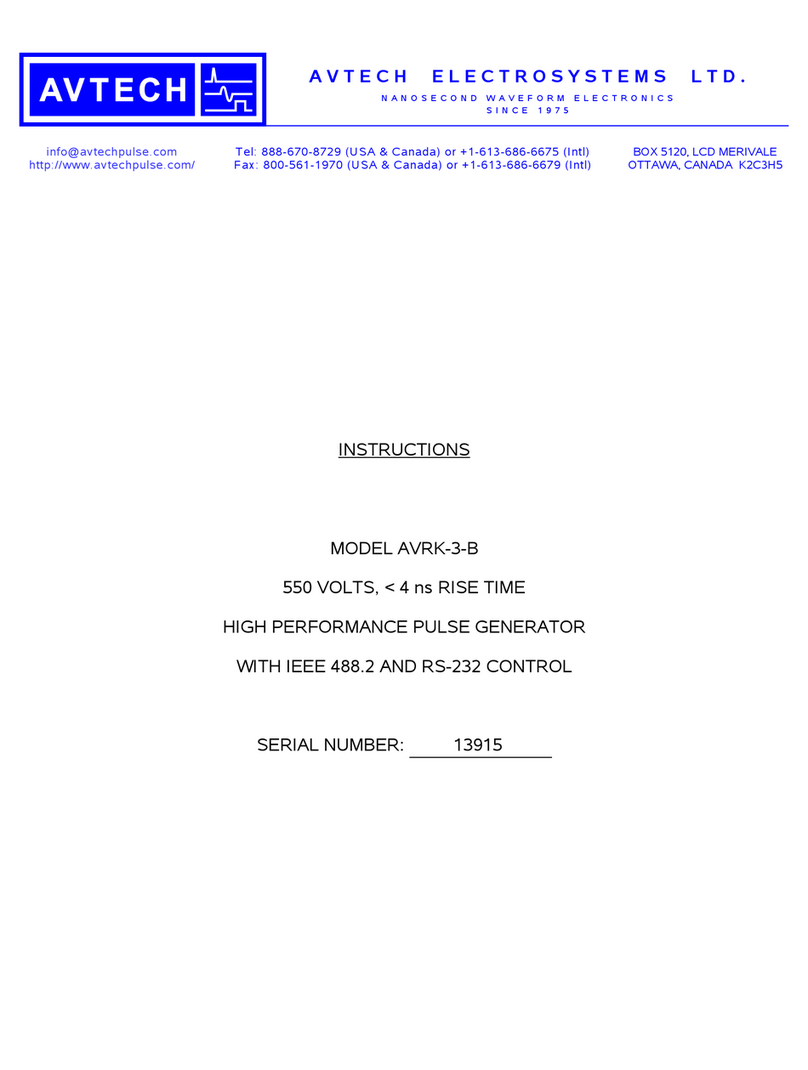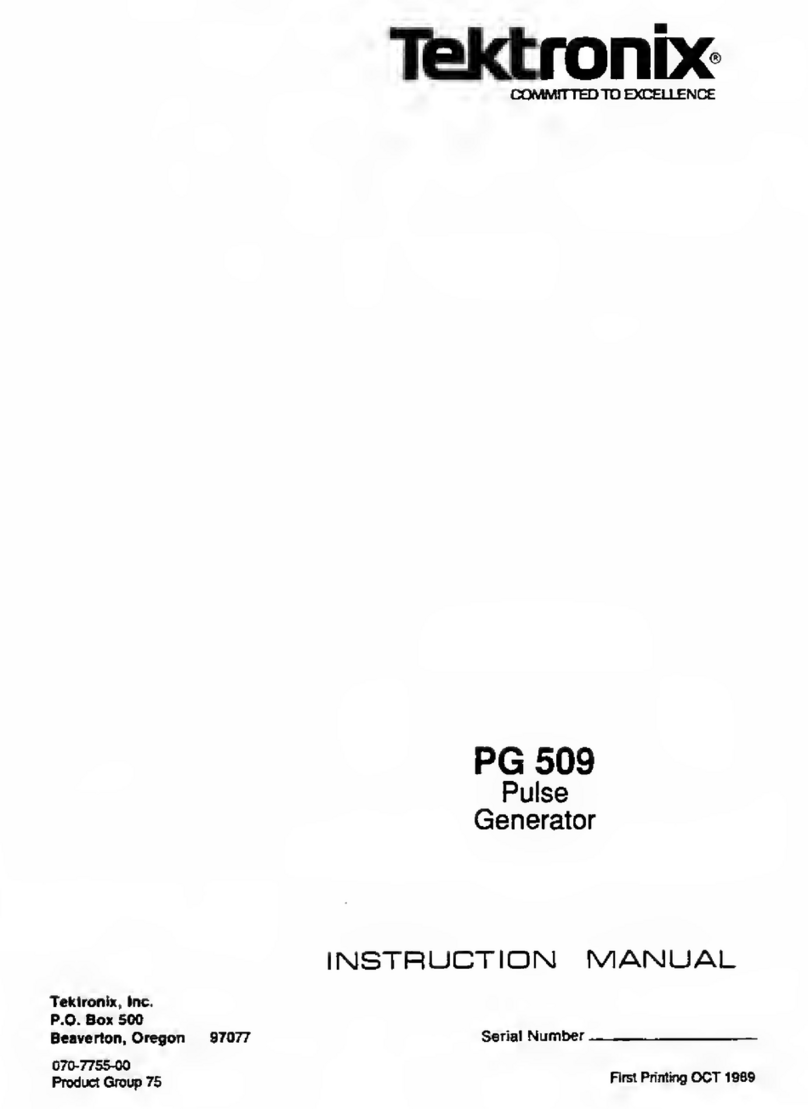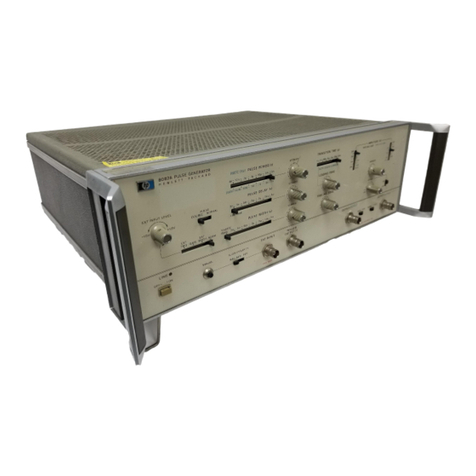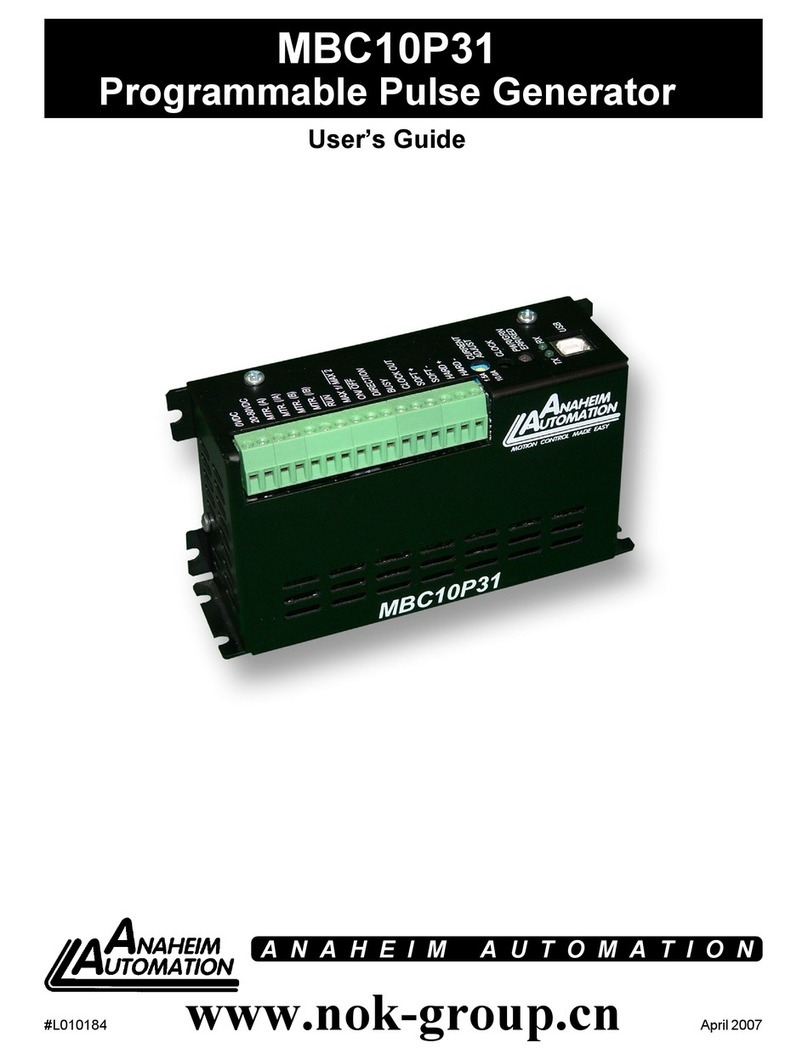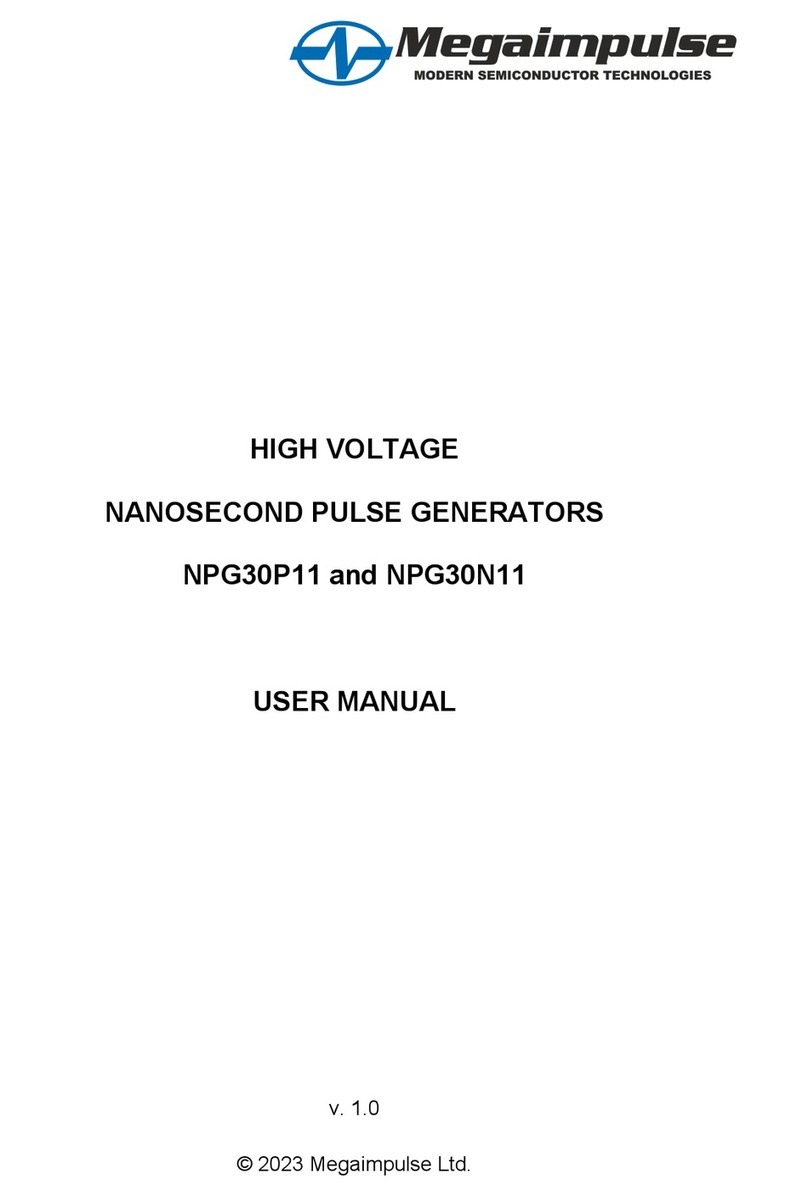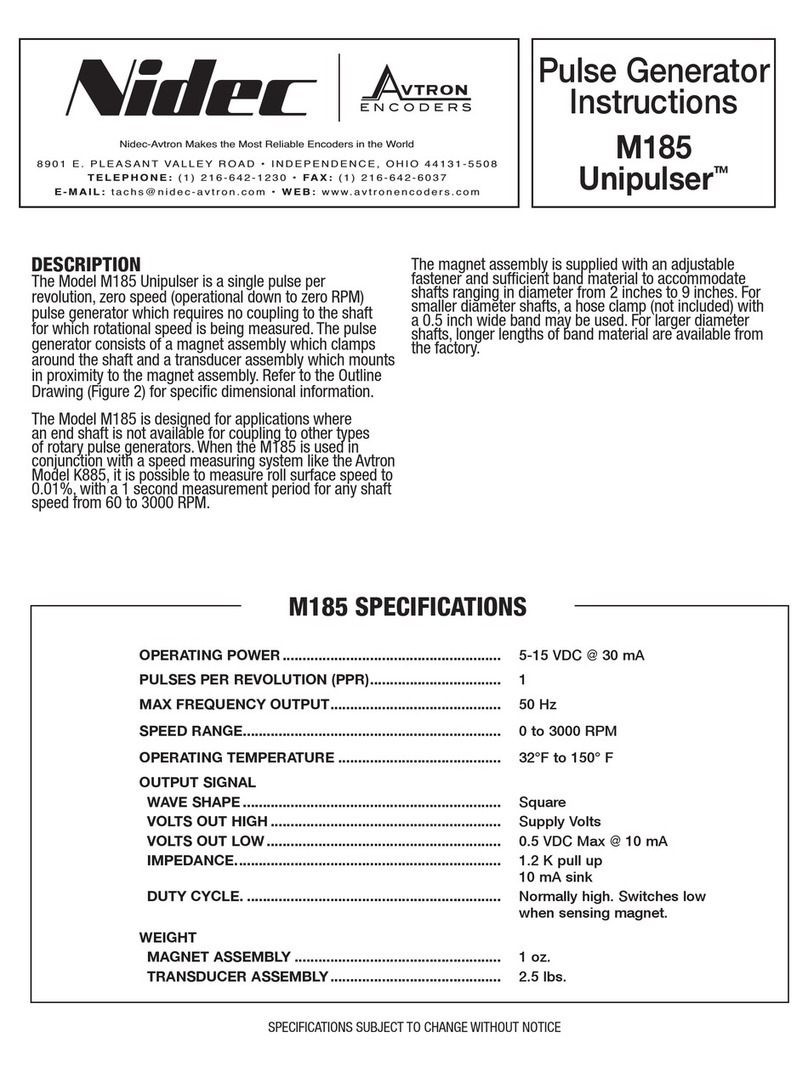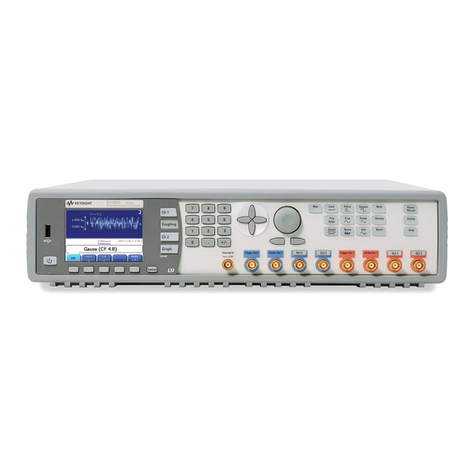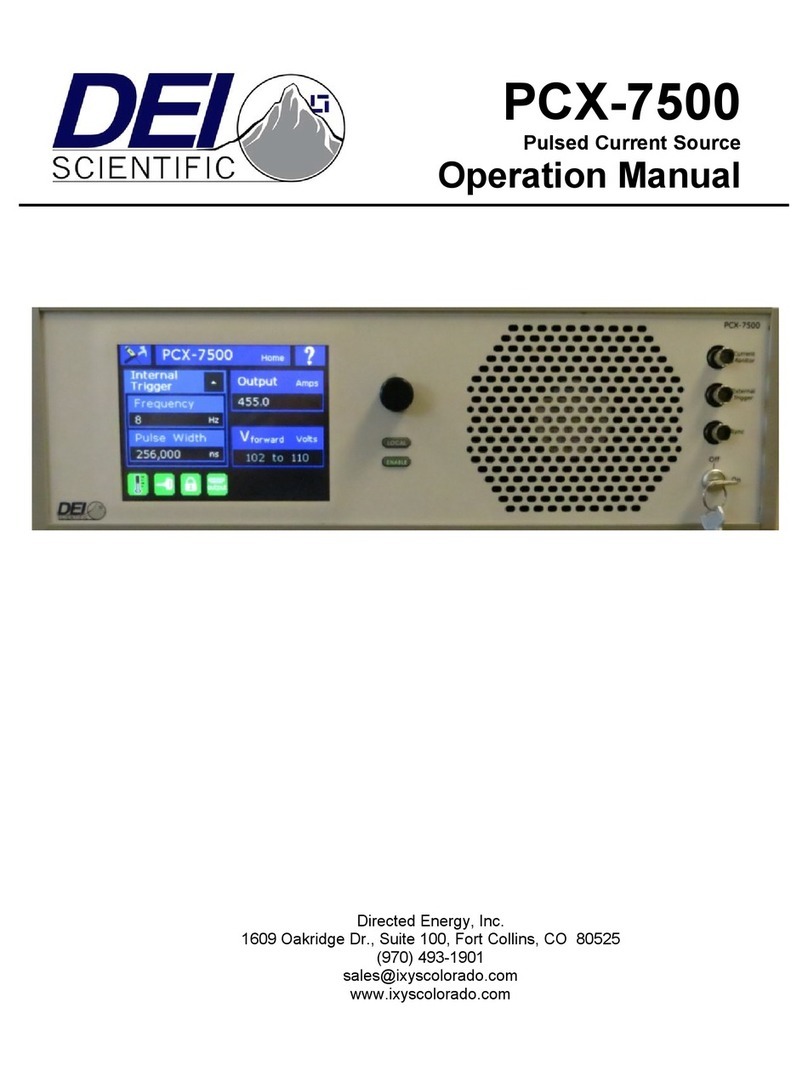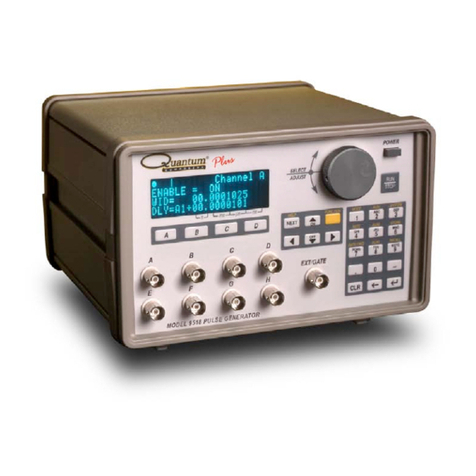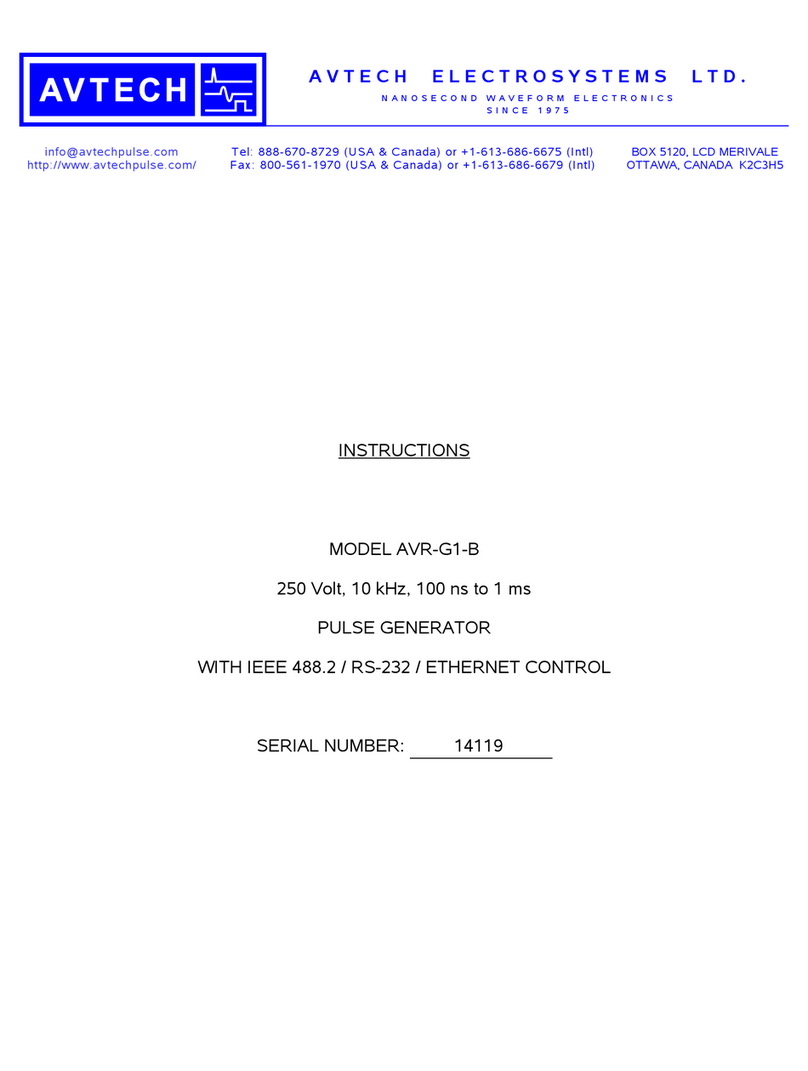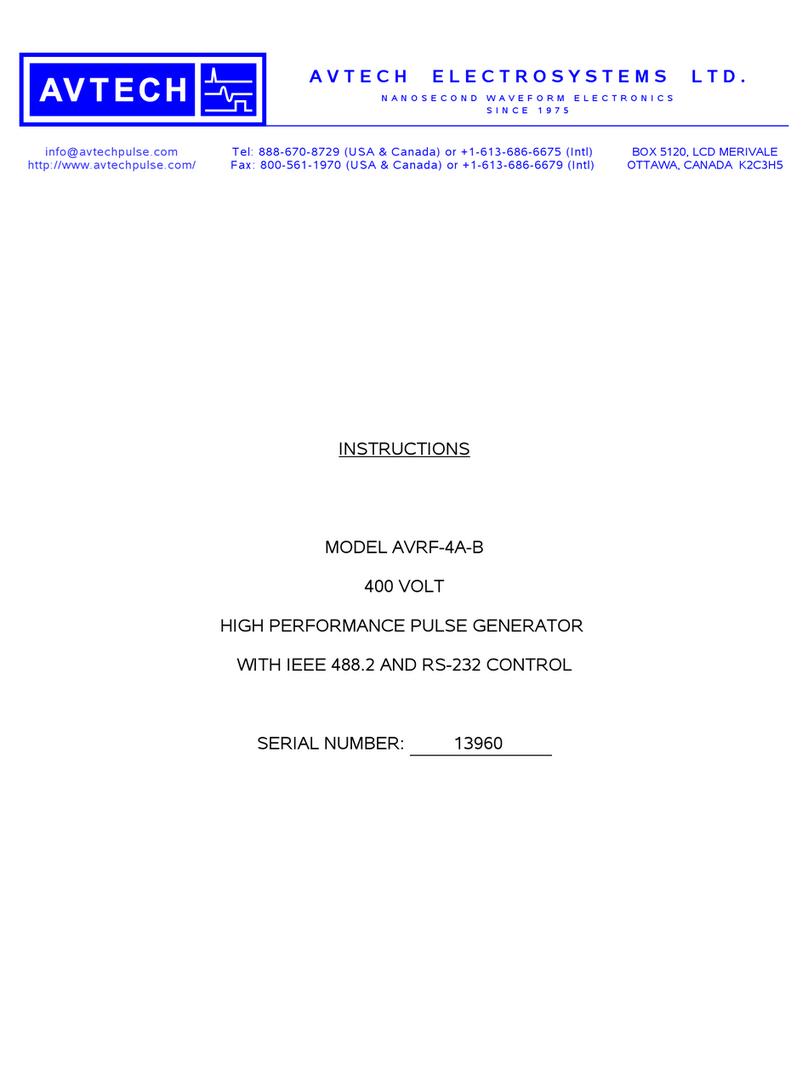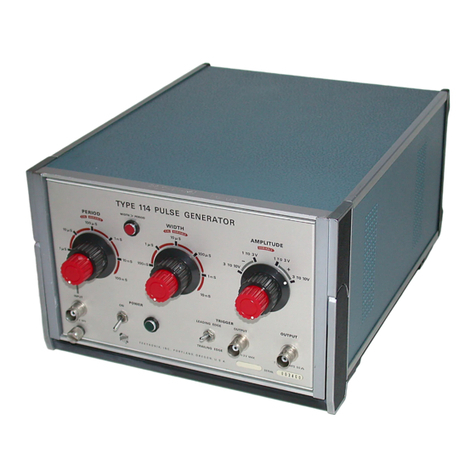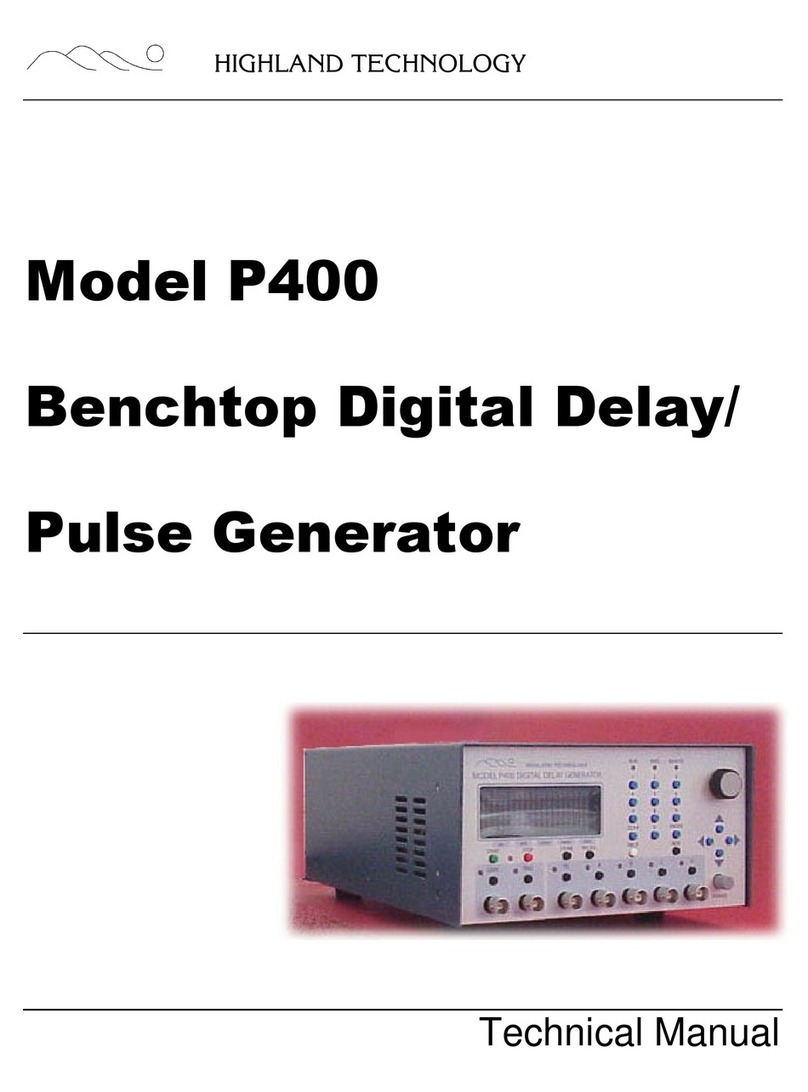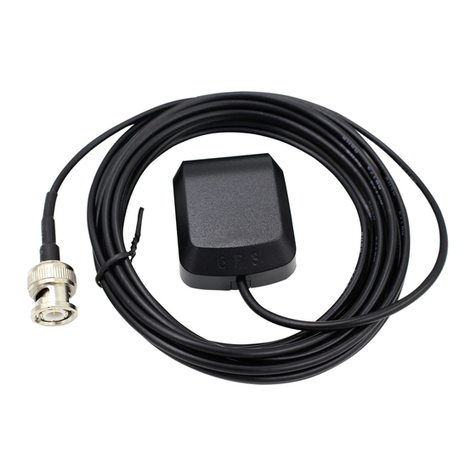SPECIFICATIONS
Model AV-1021-B
Outputs One main output,
One logic output,
One logic-complement output.
Logic output levels May be set to operate at TTL or ECL levels.
This setting applies to both the logic and logic-complement outputs.
Amplitude and peak output
(to 50 Ohms)1
Main output (when ZOUT=2Ω) < ±0.5 to ±10 V
Main output (when ZOUT=50Ω) < ±0.25 to ±5 V
Logic outputs (nominally) TTL 0 and +5V,
ECL -0.8V and -1.6V.
Pulse repetition frequency (PRF) 1 Hz to 5 MHz
Pulse width (FWHM) 20 ns to 0.5 sec, or DC
(subject to duty cycle limits)
Rise and fall times
(20%-80%)
Main ≤ 10 ns standard, 5 ns optional2
TTL ≤ 5 ns
ECL ≤ 2 ns
Adjustable DC offset10 to ±10 V for ZOUT=2Ω,
0 to ±5 V for ZOUT=50Ω
Parasitic DC offset < ±100 mV
Source impedance ZOUT Main output 2Ω or 50Ω, switchable.
This is the impedance in series with the output internally (not the load impedance).
Required load impedance ≥ 50Ω
Duty cycle (maximum) 70% (100% in PW DC mode).
Additionally, there must be at least 100 ns between the
trailing edge of one pulse and the leading edge of the next pulse.
This “dead-time” requirement will reduce the maximum duty cycle at high PRFs.
Waveform aberrations Overshoot and ringing are less than ≤ 15% at amplitudes of
1 V and higher with outputs terminating in 50Ω.
Propagation delay < 200 ns (Ext trig in to pulse out, with delay set to zero)
Trigger modes Internal trigger, external trigger (TTL level pulse, > 10 ns, 1 kΩ input impedance),
front-panel “Single Pulse” pushbutton, or single pulse trigger via computer command.
Trigger required (Gate in) TTL, synchronous or asynchronous, active high or low
Delay jitter ≤ ± 35ps ± 0.015% RMS (sync out to pulse out)
Delay 0 to ±1 sec (sync out to pulse out)
Sync output > +3 Volts, > 50 ns, will drive 50 Ohm loads
Double pulse mode spacing 1 us to 1 second (measured between the two leading edges of the pulse doublet). Must not
exceed one-half of the period. There must be at least (PW + 100 ns) of “dead time” (no pulsing)
between the trailing edge of the first pulse and the leading edge of the second pulse. For instance,
if the pulse width is 1 us, the programmed delay between leading edges must be greater than
1 us (the pulse width) + 1.1 us (the minimum dead time) = 2.1 us,
and the period must be greater than 4.2 us.
Signal connectors BNC. Main outputs and Sync are on the front panel.
Logic outputs & Gate & Trig inputs are on the rear.
GPIB and RS-232 control Included. See http //www.avtechpulse.com/gpib for details.
LabView Drivers Check http //www.avtechpulse.com/labview for availability and downloads
Ethernet port, for remote control
using VXI-11.3, ssh, telnet, & web
Included. Recommended as a modern alternative to GPIB / RS-232.
See http //www.avtechpulse.com/options/vxi for details.
Settings resolution The resolution of the timing parameters (pulse width, delay, period) varies, but is always better
than 0.15% of (|set value| + 20 ns).
The amplitude resolution is < 0.1% of the maximum amplitude.
Settings accuracy Typically ± 3% (plus ±0.1V or ± 2 ns) after 10 minute warmup. For high-accuracy applications
requiring traceable calibration, verify the output parameters with a calibrated oscilloscope.
Power requirement 100 - 240 Volts, 50 - 60 Hz
Dimensions, Weight, Chassis 100 x 430 x 375 mm (3.9” x 17” x 14.8”), 10 kg (22 lbs),
anodized aluminum with blue-gray plastic trim
Temperature range +5°C to +40°C
1) Peak output = amplitude + offset. The amplitude and offset can not be set to maximum at the same time, or the peak output rating will be exceeded.
2) Add the suffix -TR to the model number to specify the 5 ns rise time option.
